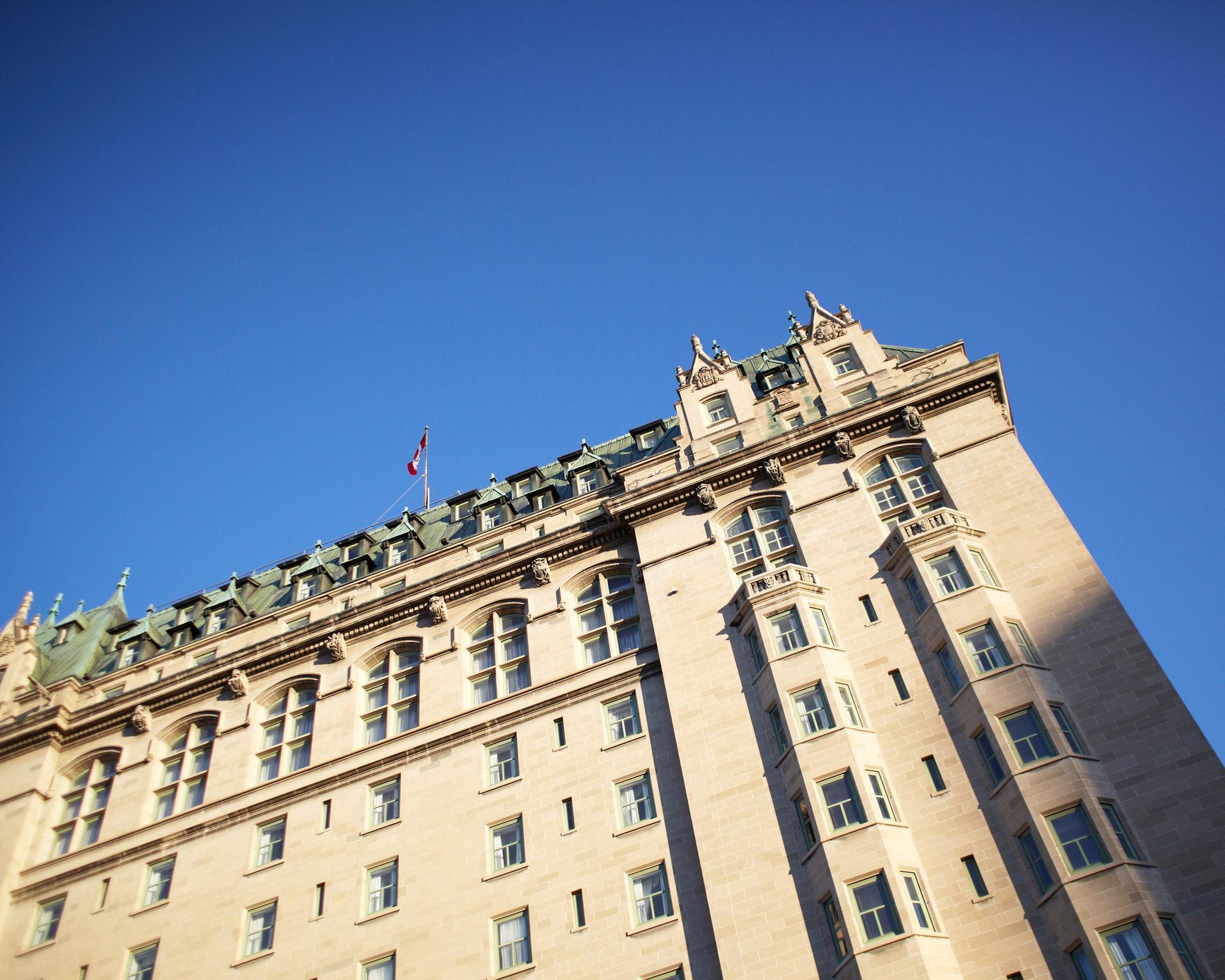Take a walk through downtown Winnipeg, Manitoba, and you'll be strolling past a solid two centuries of perfectly preserved architecture right next to the gleaming glass of new buildings. This prairie city's core has arguably the most eclectic, and beautiful, assortment of building styles in Canada. Its most recent gem, the Antoine Predock-designed Canadian Museum of Human Rights with its 328-ft tall Tower of Hope, rises above the rest, surpassing the neighboring Esplanade Riel pedestrian bridge's graceful needle by 131 ft.
While both are short stuff compared to other Canadian cities' skyscrapers, architecture here has always revolved around beauty, not size. The Exchange District's early 1900s Chicago-inspired terracotta-detailed buildings (that are now full of up-and-coming artisan shops), downtown's 1960s Modernists (home to arts and culture hubs), and -- out in the 'burbs -- the glassy, triangular Royal Canadian Mint and the sweeping curves of the Investors Group sports stadium all prove aesthetics are what matters here. This holds true even in winter, when eye-catching warming huts, chosen from top designs in an annual international challenge, dot the world's longest natural skating rink on the Assiniboine River.
Local architectural icon expert and author Frank Albo leads summer tours of the Freemason-built Manitoba Tyndall stone Legislative Building's hidden symbols and secret meanings (think The Da Vinci Code), while self-guided tours through the most historic part of Winnipeg can give you insight into how the city once looked.
Each year, Heritage Winnipeg throws Open Doors Winnipeg so people can view the city's iconic buildings -- from Victorian to Beaux-Arts -- from a unique perspective: inside their walls. Instead of viewing the pristine pillars and artful arches from the street, Open Doors invites architecture enthusiasts to explore the finer details of these buildings. Head into the passenger rail Beaux Arts-era Union Station, for example, which opened in 1911, and was designed by the same architects of New York's Grand Central Station. Across the street, you can step inside the perfectly restored Fort Garry Hotel looms, Manitoba's sole example of Ch?teau-style architecture. Looking for more? The Bank of Montreal at Portage and Main fused its original 1913 Romanesque structure with a 1980s slim, 22-story granite-faced tower. The baroque-style onion-domed Russian Orthodox churches sprinkled around the city's north end are another must-see, and they mark the pre-First World War influx of Ukrainian immigrants. What's best about experiencing Winnipeg's architecture is that you're provided with an opportunity to learn about the city's history from the buildings that shaped (and continue to shape) it.
Staying a bit more current, the mid-'50s and '60s dreamers left their marks in Winnipeg, spinning Bauhaus into what's now called Winnipeg Modernism (yes, they've coined their own term for it!). Example of this include the 1960s-vintage Centennial Concert Hall, Manitoba Museum, Royal Manitoba Theatre Centre, and City Hall campus make up a Modernist cluster on north Main Street. These are all great places to explore the city whether you're looking to catch a performance, or learn more about the province's unique history and nature.
Gus da Roza's 1970 Tyndall stone Winnipeg Art Gallery at the edge of downtown resembles a giant ship's prow, making it a must-visit for many travelers. Adjacent to the gallery, the 1926-vintage Hudson Bay building was--when it opened--Canada's largest reinforced concrete building. Head across the street and you'll find the Winnipeg Clinic that stands out as a Modernist memento amongst post-modern office buildings. In the St. Boniface community, ?tienne Gaboury's 1968 Scandinavian Expressionist Paroisse du Pr?cieux-Sang (Church of the Precious Blood) scrolls upward as a unique marker amongst the neighborhood's low-lying buildings.
After a grand tour of all this architecture, hunger will likely strike and if you're still looking to explore Winnipeg's past, step into the '60s for a meal at Rae and Jerry's Steak House or grab a "Goog Special" at the summertime Bridge Drive-In, the city's iconic ice-cream takeout joint. You've earned it. And you're not even part-way through Winnipeg's building bucket list.
Want to explore more of Winnipeg’s unique surroundings? Visit the Travel Manitoba website.
Want to explore more of Winnipeg’s unique surroundings? Visit the Travel Manitoba website.
